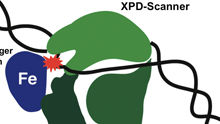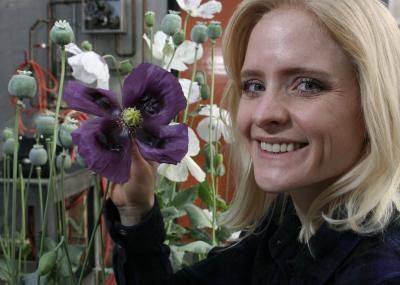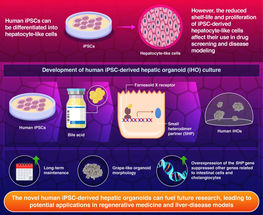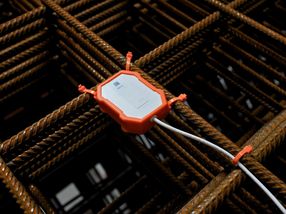ALAS, scientists at the GBF reveal the structure of a life-sustaining enzyme
Scientists of the GBF and the Technical University in Braunschweig have resolved the 3-dimensional structure of the enzyme that catalyses the first step in the synthesis of heme. "ALAS (short for '5-aminolevulinate synthase') was the last remaining enzyme in heme synthesis for which the 3-dimensional structure was not known, " explains Dirk Heinz, head of structural biology at the GBF.
Production of heme in humans and animals works like an assembly line. Ten separate enzymes are involved. Each receives a precursor molecule from the preceding enzyme, modifies it in a predetermined way, and passes it on to the next enzyme in the queue. "ALAS is particularly important," says Dieter Jahn, professor of microbiology at the Technical University, "because it is the first enzyme in the process. If it malfunctions, the entire process of heme synthesis is affected, resulting in severe anaemia".
Dysfunction of ALAS, most often due to genetic defects on the X-chromosome, causes a particularly severe form of anaemia. Overall, a shortage of heme restricts the supply of oxygen to body tissues causing common symptoms including pale skin, tiredness and lack of concentration. In this case, they are, however, combined with the accumulation of toxic levels of iron that cause acute organ damage. "The structure of ALAS will aid our understanding of this form of anaemia, will help to explain the symptoms, and will eventually enable us to improve its treatment," says Wolf-Dieter Schubert, group leader at the GBF.
The structural analysis of ALAS was partly made possible by chance: Nature tends to stick to tried-and-tested biological principles for billions of years. Apart from humans, ALAS is also found in the evolutionary ancient group of proteobacteria. These primitive organisms invented the process of producing heme and related pigments about 3.5 billion years ago, when life itself had barely been established. The scientists could therefore use bacterial ALAS, which is very similar to the human form but much more stable, to analyse the structure.
Original publication: I. Astner, J. O. Schulze, J. van den Heuvel, D. Jahn, W.-D. Schubert, D. W. Heinz; "Crystal structure of 5-aminolevulinate synthase, the first enzyme of heme biosynthesis, and its link to XLSA in humans"; The EMBO Journal 2005, 24, 18, 3166-3177.

Get the life science industry in your inbox
By submitting this form you agree that LUMITOS AG will send you the newsletter(s) selected above by email. Your data will not be passed on to third parties. Your data will be stored and processed in accordance with our data protection regulations. LUMITOS may contact you by email for the purpose of advertising or market and opinion surveys. You can revoke your consent at any time without giving reasons to LUMITOS AG, Ernst-Augustin-Str. 2, 12489 Berlin, Germany or by e-mail at revoke@lumitos.com with effect for the future. In addition, each email contains a link to unsubscribe from the corresponding newsletter.
Most read news
More news from our other portals
Last viewed contents
Sequenom Expands Molecular Diagnostics Portfolio with Acquisition of SensiGen
BASF Plant Science and Monsanto to expand their collaboration in maximizing crop yield - The companies agree to additional investments in the collaboration designed to develop higher-yielding crops

A scanner for hereditary defects
Mimosa_pudica
DNA computer brings 'intelligent drugs' a step closer
Novartis gains FDA approval for Afinitor as first new treatment in nearly three decades for patients with advanced pancreatic NET























































